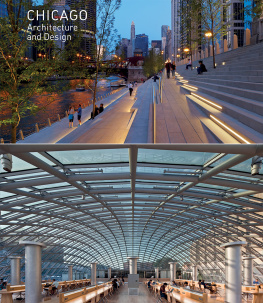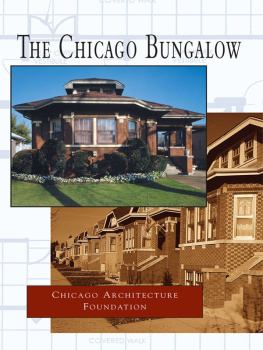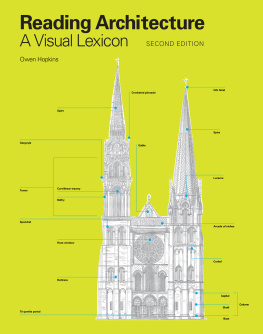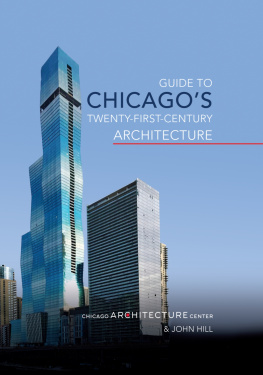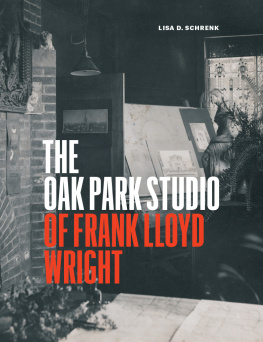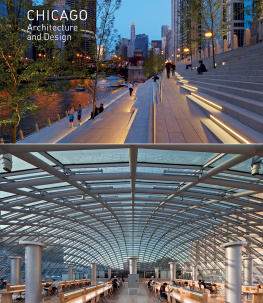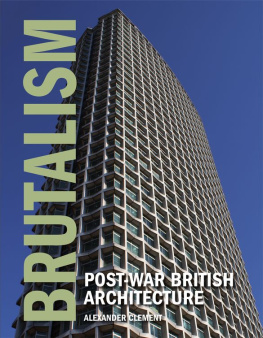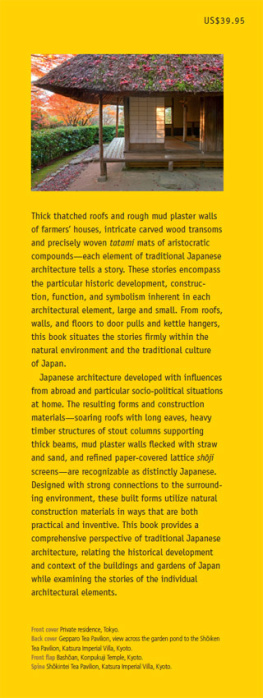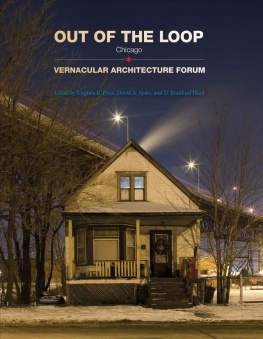
EDITOR
Sarah Massey
DESIGN
HvADesign, New York
PRODUCTION MANAGER
Katie Gaffney
Library of Congress Control Number: 2017956794
ISBN: 978-1-4197-3231-7
eISBN: 978-1-68335-421-5
Text copyright 1993, 2005, 2018 Jay Pridmore
All Hedrich Blessing photographs Hedrich Blessing
Cover 2018 Abrams
Published in 2018 by Abrams, an imprint of ABRAMS. All rights reserved. No portion of this book may be reproduced, stored in a retrieval system, or transmitted in any form or by any means, mechanical, electronic, photocopying, recording, or otherwise, without written permission from the publisher.
Abrams books are available at special discounts when purchased in quantity for premiums and promotions as well as fundraising or educational use. Special editions can also be created to specification. For details, contact specialsales@abramsbooks.com or the address below.
Abrams is a registered trademark of Harry N. Abrams, Inc.

ABRAMS The Art of Books
195 Broadway
New York, NY 10007
abramsbooks.com
Contents
Helmut Jahn
George A. Larson
CHAPTER ONE
THE ROOTS OF MODERN ARCHITECTURE
CHAPTER TWO
THE CHICAGO SCHOOL
CHAPTER THREE
FRANK LLOYD WRIGHT AND THE PRAIRIE SCHOOL
CHAPTER FOUR
FROM ARTS AND CRAFTS TO ART DECO
CHAPTER FIVE
THE MEANING OF MIES AND THE RISE OF MODERNISM
CHAPTER SIX
MODERN AND POSTMODERN CHICAGO
CHAPTER SEVEN
CHICAGOS SECOND MODERN PERIOD
CHAPTER EIGHT
IN HARMONY WITH NATURE AND THE PAST

HALO BUILDING
5800 WEST TOUHY AVENUE, NILES, ILL. 2001
MURPHY/JAHN
FOREWORD
When I arrived in Chicago in 1966 to study at I.I.T. [the Illinois Institute of Technology], I came because I regarded Chicago as the architecture capital of the world. I wasnt the only one. There were people here from all over the worldGermans, Italians, Swedes, Asians, and many other ambitious young people studying and getting jobs in Chicago. One reason, of course, was Chicagos history. We were fascinated by the Chicago Fire, the Columbian fair, the early skyscrapers, and much more. It is not to exaggerate to say that young architects regarded a visit to Chicago as equal in importance to a pilgrimage to Rome or Athens.
Of course, my coming to Chicago was for more than its history. In the 1960s Chicago was the working center of postwar modernism. Most prominently this meant Mies van der Rohe, who was directing the school of architecture at I.I.T. and designing some of the greatest buildings of the century. When I arrived Miess apartments on Lake Shore Drive had already gone up; the IBM building was being designed. And Mies was not alone. Bertrand Goldberg had recently completed Marina City. S.O.M. had built Inland Steel and was about to build Sears and John Hancock.
What more could a young architect want? Nothing. Young architects were intense, passionate, curious. I remember shortly after I arrived there was a rumor that the plans for Miess Krupp building [which he designed for the manufacturers headquarters in Essen, Germany, but was never built] were floating around Chicago. I never saw them, but I remember people saying that they would pay money to get a copy of those mysterious documents.
Its been a while since I have seen that kind of enthusiasm about architecture in most architectural offices, much less the general public. Theres also been a lot of poor architecture latelyin Chicago and everywhere else. Construction is shoddy. Form is tired and forgettable. Clients have seemed indifferent to this state of affairs, and another thing is sure: Young architects are not flocking to Chicago to launch their careers.
But things always change, and they are changing for the better. For the first time in a long time I have seen a much more open attitude about architecture, and the results are beginning to show. Perhaps the new buildings at I.I.T. are an example of new things to come. The student center and the dormitories are unlike anything else in Chicagoso much so that Chicago purists objected strongly when these buildings were introduced. They were nontraditional, different, and even seemed to go against the grain. Generally, they have been well received.
But to me good new architecture is not just a matter of doing things differently. You can always do something different from what someone did in the past. Good new architecture is about doing things better. It is absolutely critical to bear in mind that the best new buildings of our period may look different, but they are also being built with much higher standards of construction.
To me, this is one of the real traditions of Chicago: Doing things better.
The future of architecture will bring the architects and the engineers much closer together. This collaboration will do many things. Number one, it will create buildings that are economical and efficient. The collaboration will lead to new form too, as architects discover new ways to use new materials, new systems, and new methods of construction.
This idea is not new. In old Chicago, John Wellborn Root was as talented an engineer as he was an architect. Sullivan could hardly have built such artistic buildings without Adler engineering them in revolutionary ways. More recently the collaboration between the architect Bruce Graham of S.O.M. and his engineer collaborator Fazlur Khan gave rise to John Hancock and Sears Tower.
There are many other elements of Chicagos architectural heritage. Were a city of sleek towers and big shoulders. Were a city that loves elegance but needs to be gritty and real. But for me at this time, the real power of Chicagos past is in the interaction between engineer and architect, the mutual respect between the nuts and bolts of building and the artistic expression of architecture.
Will Chicago once again become the worldwide center of architecture? Perhaps not. Our profession is global now. Architects travel around the world. Their ideas can be applied in Berlin and Bangkok as appropriately as in Chicago. But architecture still has to respond to local conditions, local ideas, and local history. That is why I am very curious about the next decade or so of Chicago architecture. New technologies and new architects will find new ways to interpret our tradition in great new buildings. Some may be soaring skyscrapers, others more modest structures like a single-room occupancy hotel that we are designing for the North Side. Im convinced that there are bright spots on the architectural horizon, and that Chicago may once again reassert itself as one of the most energetic architectural cities of the world.
HELMUT JAHN, MURPHY/JAHN ARCHITECTS

HALO BUILDING
5800 WEST TOUHY AVENUE, NILES, ILL. 2001
MURPHY/JAHN

PRIVATE RESIDENCE
MICHIGAN AVENUE
1994
LARSON ASSOCIATES;
STAIRWAY BY JAMES CARPENTER
Next page
